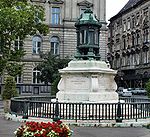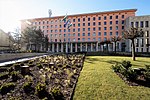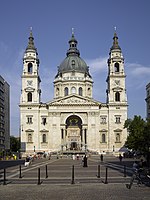Hungarian Postal Savings Bank
Art Nouveau architecture in BudapestBank stubsBanks established in 1886Defunct banks of Hungary

The Hungarian Postal Savings Bank (Hungarian: Magyar Postatakarékpénztár) was a major savings institution in Hungary, established in 1886 as the Hungarian Royal Postal Savings Bank (Hungarian: Magyar Királyi Postatakarékpénztár) and terminated in 1948. It is well remembered for its head office in District V of Budapest, a striking Art Nouveau building designed by Ödön Lechner.
Excerpt from the Wikipedia article Hungarian Postal Savings Bank (License: CC BY-SA 3.0, Authors, Images).Hungarian Postal Savings Bank
Hold utca, Budapest Lipótváros
Geographical coordinates (GPS) Address Nearby Places Show on map
Geographical coordinates (GPS)
| Latitude | Longitude |
|---|---|
| N 47.5044 ° | E 19.0521 ° |
Address
Postatakarékpénztár (Magyar Államkincstár)
Hold utca 4
1054 Budapest, Lipótváros
Hungary
Open on Google Maps










